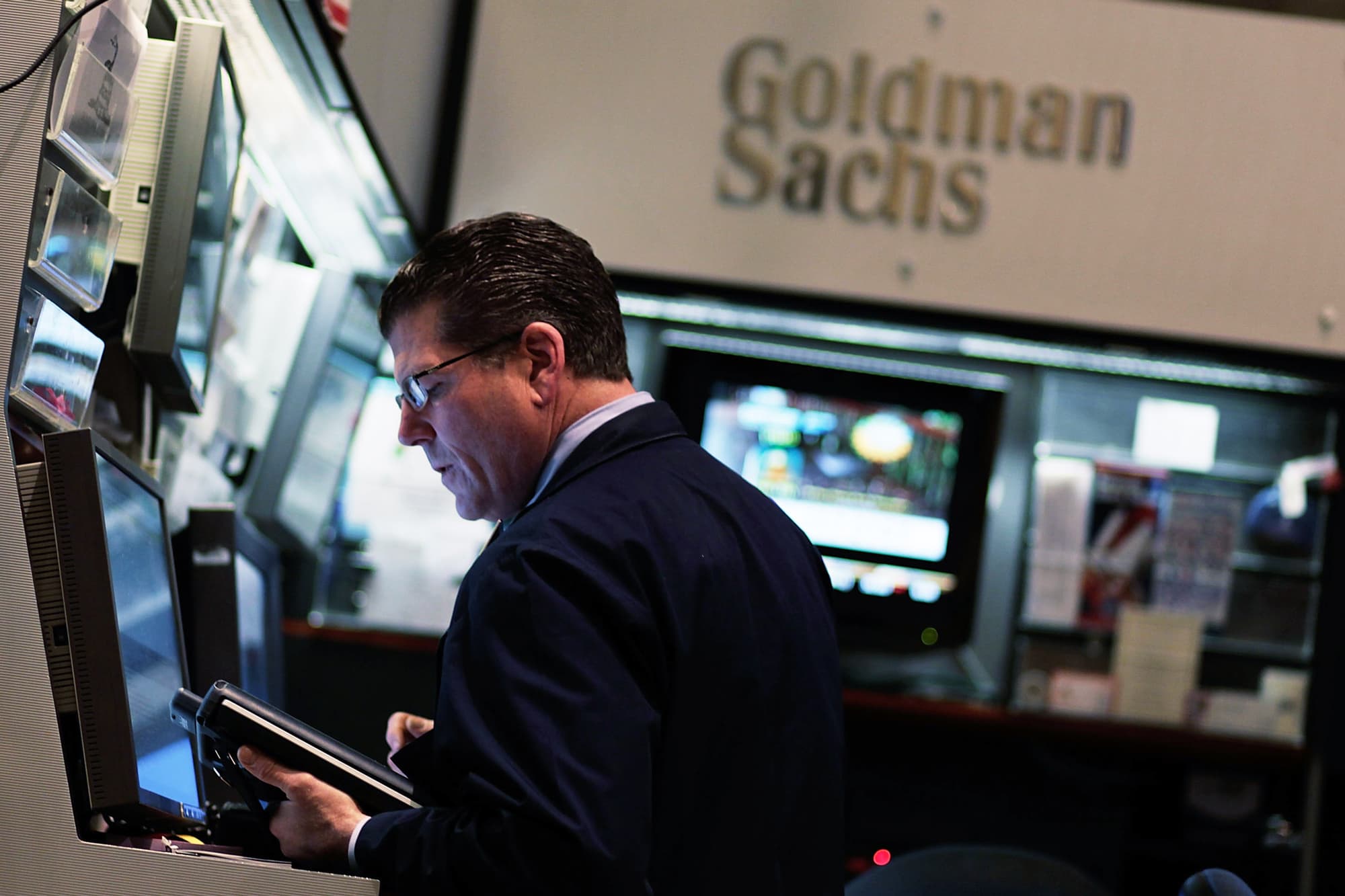Stock futures fall as hot inflation report overshadows better-than-expected earnings results

The Goldman Sachs booth on the floor of the New York Stock Exchange
Getty Images
Stock futures fell in a sudden move after a hotter-than-expected inflation report overshadowed a strong start to second-quarter earnings season.
Dow Jones Industrial Average futures fell 47 points, or 0.1%. S&P 500 futures lost 0.2%. Nasdaq 100 futures shed 0.2%.
Inflation rose at its fastest pace in nearly 13 years, the Labor Department reported Tuesday. The consumer price index increased 5.4% from a year ago. Economists surveyed by Dow Jones had been expecting a 5% gain. Core CPI, excluding food and energy, jumped 4.5%, the sharpest move for that measure since September 1991 and well above the estimate of 3.8%.
With stocks at records and the Dow Jones Industrial Average just shy of 35,000, investors had high expectations going into the reports.
JPMorgan Chase posted earnings and revenue that topped Wall Street estimates. JPMorgan shares, which are up 24% this year through Monday’s close, were slightly lower in premarket trading.
Goldman Sachs shares ticked slightly higher in the premarket after beating analysts’ expectations for second-quarter fiscal results as well. A strong IPO market boosted Goldman’s investment banking revenues.
Boeing shares fell roughly 2% in premarket trading, pressuring sentiment on the Dow futures a bit, after the plane maker cut 787 Dreamliner production following the finding of a new flaw.
JPMorgan Chase shares fell about 1% in premarket trading even after posting second-quarter earnings of $11.9 billion, or $3.78 per share, which exceeded the $3.21 estimate of analysts surveyed by Refinitiv.
Banks set aside billions of dollars for loan losses amid the pandemic, but have been releasing those reserves as consumers performed better than expected. JPMorgan released $3 billion in loan loss reserves after taking just $734 million in charge-offs. That gave the firm a $2.3 billion benefit, allowing the bank to top earnings expectations.
Investors may be giving less credit to JPMorgan’s earnings beat due to this loan loss reserve release. The shares also saw a nice run into the report, indicating expectations likely ran higher than the official estimates reflected.
Meanwhile, Goldman Sachs shared edged less than 1% higher in the premarket. The firm reported second-quarter earnings of $15.02 per share, topping analysts’ expectation of $10.24 earnings per share. The bank posted its second-best ever quarterly investment banking revenue as a rush of IPOs hit Wall Street last quarter.
PepsiCo also reported a sizable beat for second-quarter earnings and revenue, fueled by returning restaurant demand. The drink and snack giant also raised its forecast. Shares added more than 1% in premarket trading.
Overall earnings reports are expected to be stellar for the second quarter over the coming weeks with profit growth estimated at 64% year-over-year for the quarter, according to FactSet. That would be the biggest quarterly profit increase since 2009.
Banks’ earnings are expected to more than double for the second quarter, with an estimated 119.5% estimated year-over-year growth rate, according to analysts polled by FactSet.
In the regular trading session on Monday the Dow rose 126.02 points to close just below 35,000. The blue-chip measure is up 14% this year. The S&P 500 and Nasdaq Composite gained 0.3% and 0.2%, respectively, to record closes.
“High expectations for earnings and each companies’ forward guidance will push markets higher or disappointment may create a small pullback in equity markets,” said Jeff Kilburg, chief investment officer at Sanctuary Wealth. “Eyes will be on the major banks to set the tone for the next few weeks of earnings.”
Bank of America, Citigroup, Wells Fargo and Morgan Stanley all ended the day higher as well. They will report their earnings later in the week.
Federal Reserve Chairman Jerome Powell is scheduled to appear in front of Congress Wednesday and Thursday to provide an update on monetary policy. He has maintained that the Fed’s easy policies will remain intact until there’s more progress on its employment and inflation goals.




